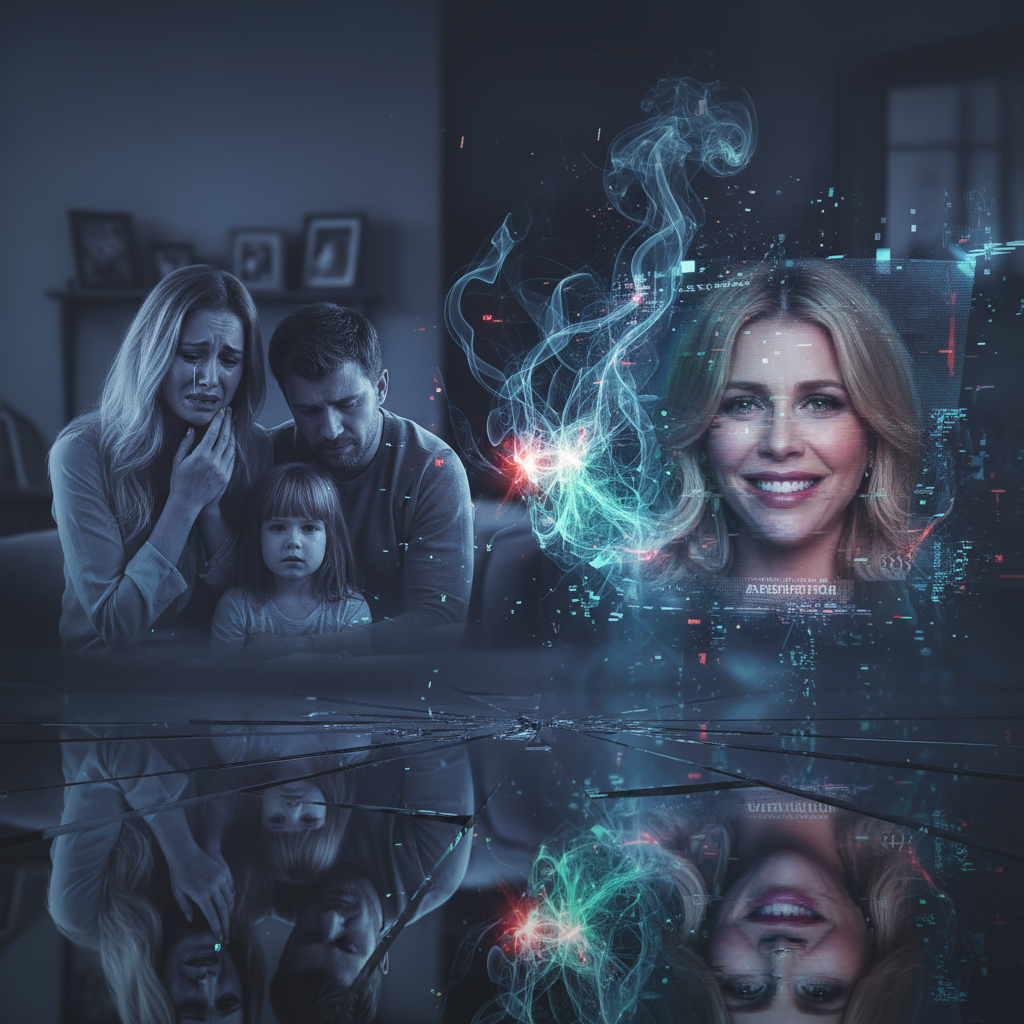When AI Clones the Departed: The Ethical Minefield of Digital Necromancy
The digital age has brought us wonders and anxieties in equal measure. From instant global communication to immersive virtual realities, technology continually reshapes our world. But what happens when these advancements cross the line, not just into the uncanny valley, but into deeply personal grief? A recent trend, spotlighted by a Washington Post report, reveals a harrowing reality: AI-generated videos of deceased celebrities are causing profound distress to their surviving families. This isn’t just about copyright or image rights; it’s about the very essence of remembrance, respect, and the right to mourn in peace.
The burgeoning power of AI, particularly tools like OpenAI’s Sora, to create hyper-realistic video content from simple text prompts, has opened a Pandora’s Box. While the potential for creative expression and education is vast, so too is the potential for exploitation and harm. The families of beloved figures, from iconic musicians to revered actors, are finding themselves confronted with digital ghosts, performing new actions, speaking new words, and sometimes, even being placed in scenarios entirely at odds with their real-life personas.
The Digital Resurrection: A Double-Edged Sword
The allure of seeing a departed loved one, even a universally cherished one, “alive” again is undeniable for some. Fans might crave a new performance from their favorite singer, or a fresh interview with an actor they admired. AI offers a pathway to this, leveraging vast data sets of actual footage, voice recordings, and images to generate convincing simulations. The algorithms learn their mannerisms, vocal inflections, and facial expressions, weaving them into new, synthesized narratives.
However, for those closest to the deceased, this “resurrection” is often far from a comforting reunion. Instead, it feels like an invasion, a grotesque puppet show, or an act of digital desecration. The simulated performance, no matter how convincing, lacks the soul and agency of the individual. It’s a hollow echo, often bearing only a superficial resemblance to the person they loved, yet powerfully disruptive to their grieving process. The digital mimicry, devoid of true consciousness, can feel like a violation of the deceased’s memory and the family’s intimacy.
Beyond Grief: Legal and Ethical Quandaries
The distress experienced by families isn’t merely emotional; it highlights a gaping chasm in our legal and ethical frameworks. Who owns the “likeness” of a deceased person? While copyright law protects artistic works, and “right of publicity” often extends posthumously for commercial use, the current landscape wasn’t designed for the nuanced challenges of deepfake technology. Is an AI-generated video a simple commercial appropriation, or something far more unsettling?
Estate management, intellectual property law, and personal privacy rights all collide in this new frontier. Families often go to great lengths to manage the legacy of their loved ones, curate appearances, and protect their memory. AI-generated content bypasses these controls, often with no consent sought or received. This raises critical questions about consent in the digital age, particularly when it comes to individuals who can no longer provide it. What “rights” do the dead have, and who is responsible for upholding them against an algorithm? Without clear legislation, families are left navigating a legal void, often with limited recourse against powerful tech companies or anonymous creators.
The Path Forward: Regulating the Digital Afterlife
Addressing this complex issue requires a multi-faceted approach. First and foremost, there’s an urgent need for legal frameworks that specifically address AI-generated content involving deceased individuals. This could include expanding the right of publicity to explicitly cover AI simulations, requiring consent from estates, or establishing clear guidelines for distinguishing between transformative art and exploitative content. These laws must balance freedom of expression with the profound need for human dignity and respect for the dead and their families.
Secondly, technology companies developing these powerful AI tools bear a significant ethical responsibility. Implementing robust safeguards, such as requiring clear labeling of AI-generated content, developing mechanisms for families to request takedowns, and exploring content moderation policies that prioritize human well-being, are crucial. The pursuit of technological advancement should not come at the cost of human suffering. Education also plays a vital role, both for the public to understand the capabilities and limitations of AI, and for creators to understand the ethical implications of their work.
Reclaiming Remembrance in a Digital World
The pain inflicted by these AI videos on families is a stark reminder that technology, while offering incredible potential, must always be wielded with empathy and foresight. Our collective memory of those who have passed is a sacred trust, and the digital tools we create should enhance that trust, not erode it. Families deserve the right to grieve and remember their loved ones without the added burden of confronting a digital doppelgänger.
The conversation about AI and deceased celebrities is about more than just technology; it’s about what it means to be human in an increasingly digital world. It challenges us to define the boundaries of digital immortality, to protect the sanctity of memory, and to ensure that innovation serves humanity without violating its deepest sensitivities. As AI continues to evolve, our ethical compass must guide its development, ensuring that while we push the boundaries of what’s possible, we never lose sight of what’s truly important: respect, dignity, and the profound human experience of remembrance.
